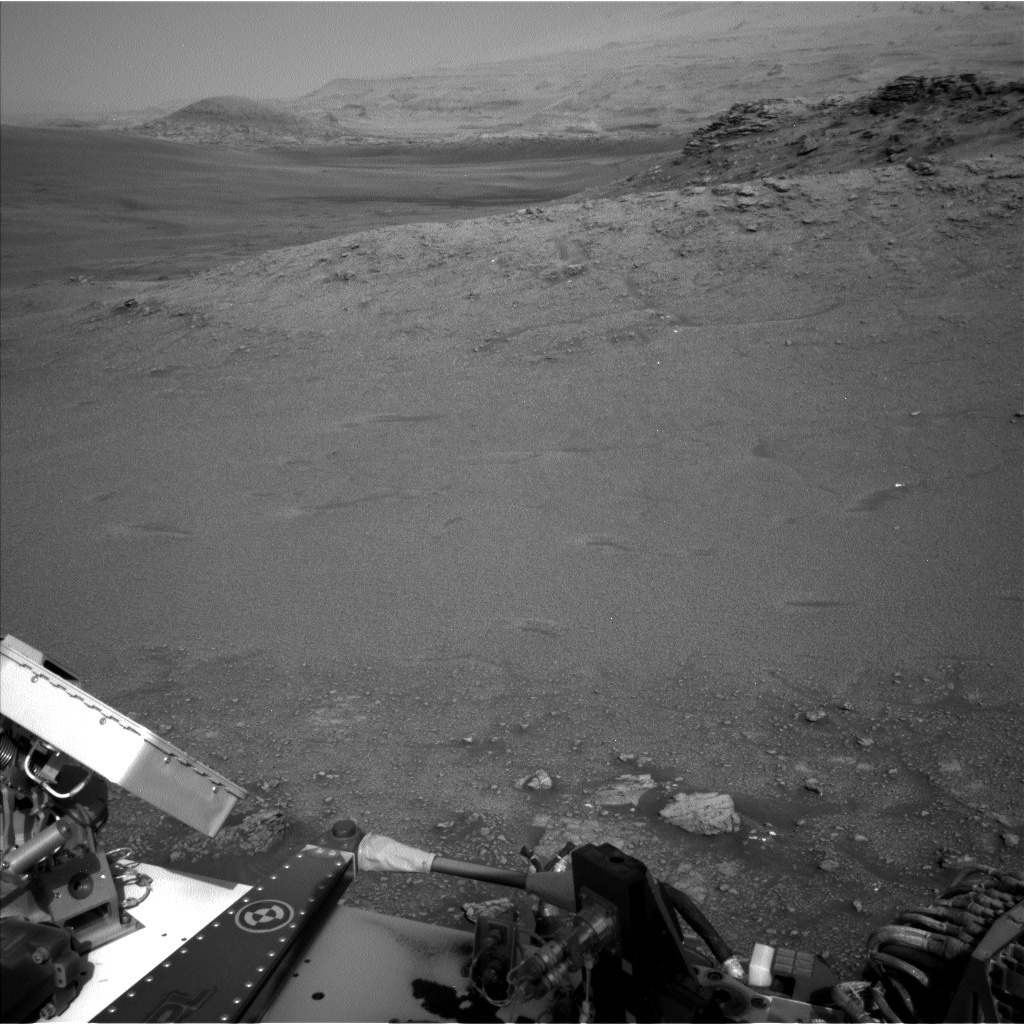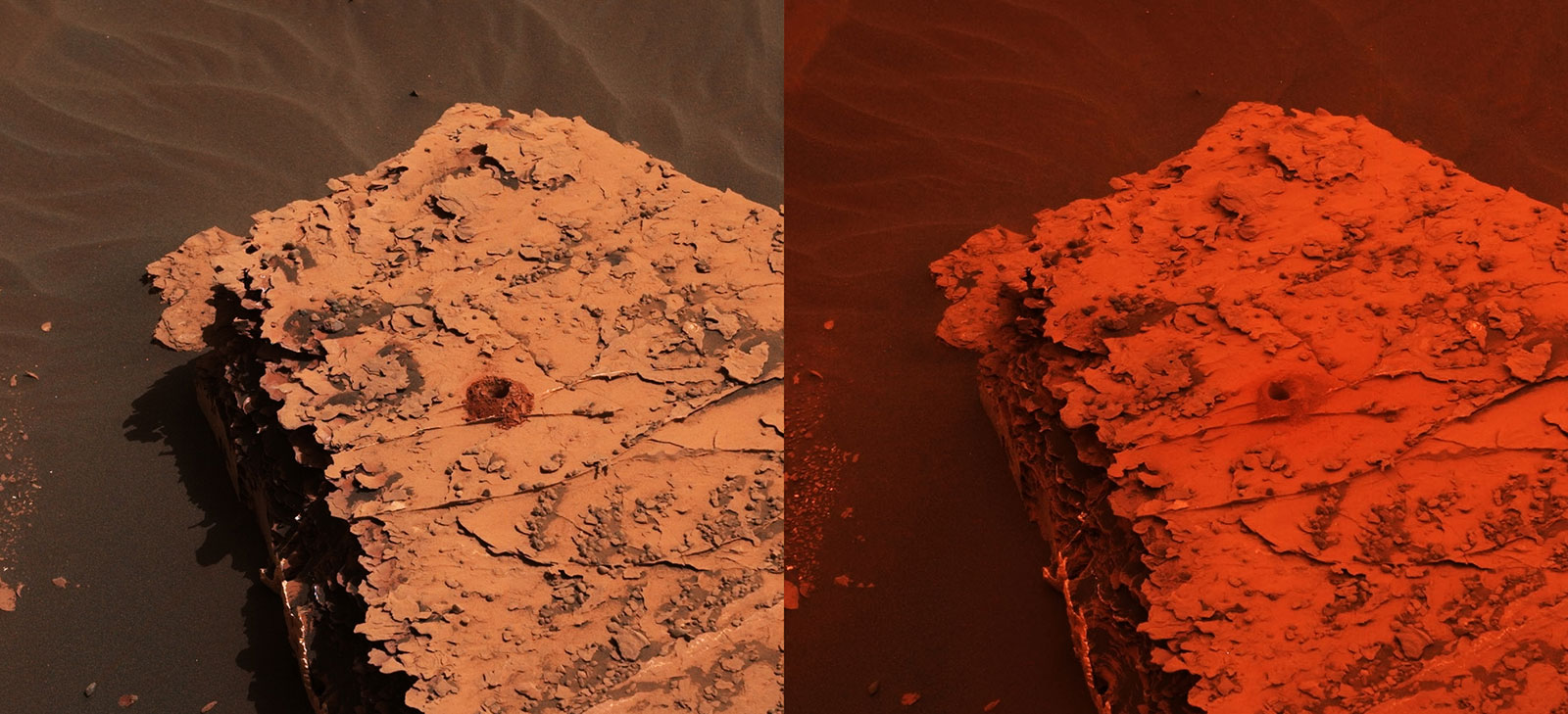2 min read

Here in the UK we are going into winter season, when raindrops on the window are the regular background music, accompanied by the noise of wind that can get quite fierce at times. While it doesn’t rain in Gale crater, Curiosity is quite familiar with wind, and she watches out for the atmospheric phenomena around herself. If you want to know why, remember that ‘before and during the dust storm’ set of images of the Duluth drill hole? Well, here it is again:
Impressive, isn’t it? As we are again in the dust storm season, Curiosity monitors the environment even more closely, and in this plan there is a Navcam line of sight imaging activity and Mastcam basic tau, which are both to watch the opacity in the atmosphere. Those are not from the typical cadence of activities Curiosity performs outside the dust storm season but are added especially now due to the potential for increased regional dust activity. Curiosity also watches out for dust devils again in this plan. So, while it doesn’t rain at Gale crater, there is still a lot to watch out for!

On the rocky side, Curiosity will perform an APXS measurement on the target ‘Giova,’ which is a bedrock target. ChemCam will look at the same target and add to its portfolio of bedrock targets by investigating the targets ‘Green Blett’ and ‘Gribun.’ The team decided to focus on the bedrock because we are on the move again, and we are expecting to see changes in the bedrock chemistry as we travel along the landscape. The image above, peeking over the deck of Curiosity with Navcam, gives an impression of the laminated outcrops along the way. With so much to look at, Mastcam is really busy in this plan, imaging several of those outcrops, and taking a larger workspace image, too. On top of it all, and to the delight of the mineralogists like me, there also is a multispectral image of the target Giova – to be taken after the DRT and APXS activity. After so much atmospheric science, geochemistry and imaging for sedimentology, Curiosity gets on the road again, rolling along those beautiful benches and outcrops that have so much to tell about the geologic and geochemical history of Gale crater!
Written by Susanne Schwenzer, Planetary Geologist at The Open University







